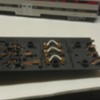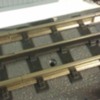Sorry for the late reply, I didn't know the link was to one of my videos. There are a lot of ways to do this I did the easy route. I use MTH realtrak but it can be done on any track system. Some experimenting will need to be done to get the effect you want. The LED's that I used cool white 1.8mm from Evans Designs. They are alittle prices but all of the wires, resistors, diodes, etc.. are already build in so that eliminates a lot of wiring plus they work with ac or dc power supply. I used a 10in track section MTH model #40-1029. http://www.mthtrains.com/content/40-1029
You can use any track you want but this one requires no cutting of the rail.
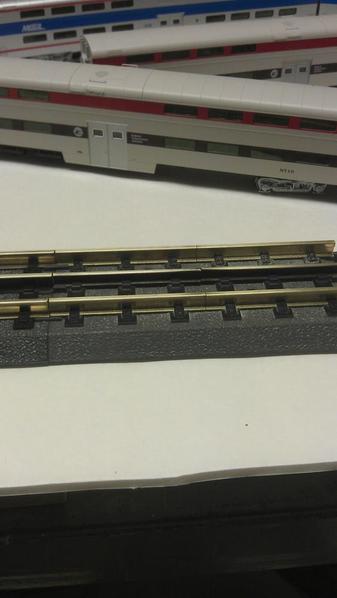
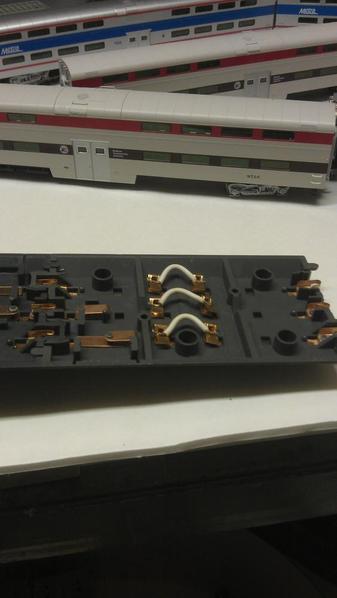
The track comes in two 5in sections that are cut down the middle to give you 4 sections at 2.5in in length which is about the size of one subway wheel truck. Removing the wire on the bottom of one of the outside rails will isolate that section of track from the rest of the system. That is where one wire from the led goes, the other is connected to the hot or center rail.
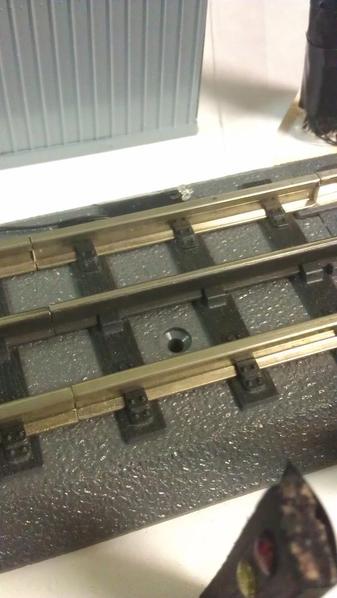
In this pic the top rail is isolated for the LED to flash when the train rolls over this section. Also more step may need to be taken to prevent the LED from lighting up at the wrong time or staying lit when the train has passed. In this case the copper clips that connect the track together are removed (only on the isolated rail and not the copper clips holding the white wire in the 2nd pic) and use small pieces of plastic or postcard to slide in between the rails to prevent contact. If you like real close you can see the plastic in between the joints. The LED is a 1.8mm flashing light and should fit in between the top and bottom of the rail. I moved the led out so you can see it. There are two downsides to this.
1. If you have other thing going on your layout, crossing gates, signal lights, a lot of switches and double crossovers. Adding some of these could mess with you DCS signal
if you are using DCS to run your trains.
2. If you stop the train and one of the wheels/truck is on the isolated track the LED will keep flashing. There are ways to prevent this but I didn't go through all the trouble because my trains only stop at stations.
Any track system can be used, You will either have to cut the rails or buy smaller track sections and isolate one rail on that section. I used this method on a O-31 1/2 curve.








